People around the world are feeling the tangible evidence of climate change. The extreme heat…
The post Heat Wave Health Risks: Safety Tips for Extreme Heat appeared first on Earth911.

People around the world are feeling the tangible evidence of climate change. The extreme heat…
The post Heat Wave Health Risks: Safety Tips for Extreme Heat appeared first on Earth911.
This story was originally published by High Country News and is reproduced here as part of the Climate Desk collaboration.
High winds tore at Gothic Mountain as the sleeping giant watched over the cabins nestled in Gothic, Colorado, a remote outpost accessible only by skis during the valley’s harsh alpine winters. The plumes of snow that lifted from the peak briefly appeared to form a cloud and then disappeared.
To many, the snow that seemed to vanish into thin air would go unnoticed. But in a region where water availability has slowly begun to diminish, every snowflake counts. Each winter, an unknown percentage of the Rocky Mountain West’s snowpack disappears into the atmosphere, as it was doing on Gothic Mountain, just outside the ski resort town of Crested Butte.
In the East River watershed, located at the highest reaches of the Colorado River Basin, a group of researchers at Gothic’s Rocky Mountain Biological Laboratory (RMBL) are trying to solve the mystery by focusing on a process called sublimation. Snow in the high country sometimes skips the liquid phase entirely, turning straight from a solid into a vapor. The phenomenon is responsible for anywhere between 10 percent to 90 percent of snow loss. This margin of error is a major source of uncertainty for the water managers trying to predict how much water will enter the system once the snow begins to melt.
Although scientists can measure how much snow falls onto the ground and how quickly it melts, they have no precise way to calculate how much is lost to the atmosphere, said Jessica Lundquist, a researcher focused on spatial patterns of snow and weather in the mountains. With support from the National Science Foundation, Lundquist led the Sublimation of Snow project in Gothic over the 2022-’23 winter season, seeking to understand exactly how much snow goes missing and what environmental conditions drive that disappearance.
“It’s one of those nasty, wicked problems that no one wants to touch,” Lundquist said. “You can’t see it, and very few instruments can measure it. And then people are asking, what’s going to happen with climate change? Are we going to have less water for the rivers? Is more of it going into the atmosphere or not? And we just don’t know.”
The snow that melts off Gothic will eventually refill the streams and rivers that flow into the Colorado River. When runoff is lower than expected, it stresses a system already strained because of persistent drought, the changing climate and a growing demand. In 2021, for example, snowpack levels near the region’s headwaters weren’t too far below the historical average — not bad for a winter in the West these days. But the snowmelt that filled the Colorado River’s tributaries was only 30 percent of average.
“You measure the snowpack and assume that the snow is just going to melt and show up in the stream,” said Julie Vano, a research director at the Aspen Global Change Institute and partner on the project. Her work is aimed at helping water managers decode the science behind these processes. “It just wasn’t there. Where did the water go?”
As the West continues to dry up, water managers are increasingly pressed to accurately predict how much of the treasured resource will enter the system each spring. One of the greatest challenges federal water managers face — including officials at the Bureau of Reclamation, the gatekeeper of Lake Powell and Lake Mead — is deciding how much water to release from reservoirs to satisfy the needs of downstream users.
While transpiration and soil moisture levels may be some of the other culprits responsible for water loss, one of the largest unknowns is sublimation, said Ian Billick, the executive director of RMBL.
“We need to close that uncertainty in the water budget,” Billick said.
The East River’s tributaries eventually feed into the Colorado River, which supplies water to nearly 40 million people in seven Western states as well as Mexico. This watershed has become a place where more than a hundred years of biological observations collide, many of these studies focused on understanding the life cycle of the water.
Lundquist’s project is one of the latest. Due to the complexity of the intersecting processes that drive sublimation, the team set up more than 100 instruments in an alpine meadow just south of Gothic known as Kettle Ponds.
“No one’s ever done it right before,” Lundquist said. “And so we are trying our very best to measure absolutely everything.”
Throughout the winter, the menagerie of equipment quietly recorded data every second of the day — measurements that would give the team a snapshot of the snow’s history. A device called a sonic anemometer measured wind speed, while others recorded the temperature and humidity at various altitudes. Instruments known as snow pillows measured moisture content, and a laser imaging system called “Lidar” created a detailed map of the snow’s surface.
From January to March, the three coldest months of the year, Daniel Hogan and Eli Schwat, graduate students who work under Lundquist at the University of Washington, skied from their snow-covered cabin in Gothic to Kettle Ponds to monitor the ever-changing snowpack.
Their skis were fitted with skins, a special fabric that sticks to skis so they can better grip the snow. The two men crunched against the ground as they made their near-daily trek out to the site, sleds full of gear in tow. It was a chilly day in March, but the searing reflection of the snow made it feel warmer than it was. When Hogan and Schwat arrived, they dug a pit into the snow’s surface, right outside the canopy of humming instrumentation.
The pair carefully recorded the temperature and density of the snow inside. A special magnifying glass revealed the structure of individual snowflakes, some of them from recent storms and others, found deeper in the pit, from weeks or even months before. All of these factors can contribute to how vulnerable the snowpack is to sublimation.
This would be just one of many pits dug as snow continued to blanket the valley. If all of the measurements the team takes over a winter are like a book, a snow pit is just a single page, Hogan said.
“Together, that gives you the whole winter story,” he said, standing inside one of the pits he was studying. Just the top of his head stuck out of the snowpit as he examined its layers.
Lundquist’s team began analyzing the data they collected long before the snow began to melt.
They hope it will one day give water managers a better understanding of how much sublimation eats into the region’s water budget — helping them make more accurate predictions for what is likely to be an even hotter, and drier, future.
This story was originally published by Grist with the headline The case of the Colorado River’s missing water on Jul 30, 2023.
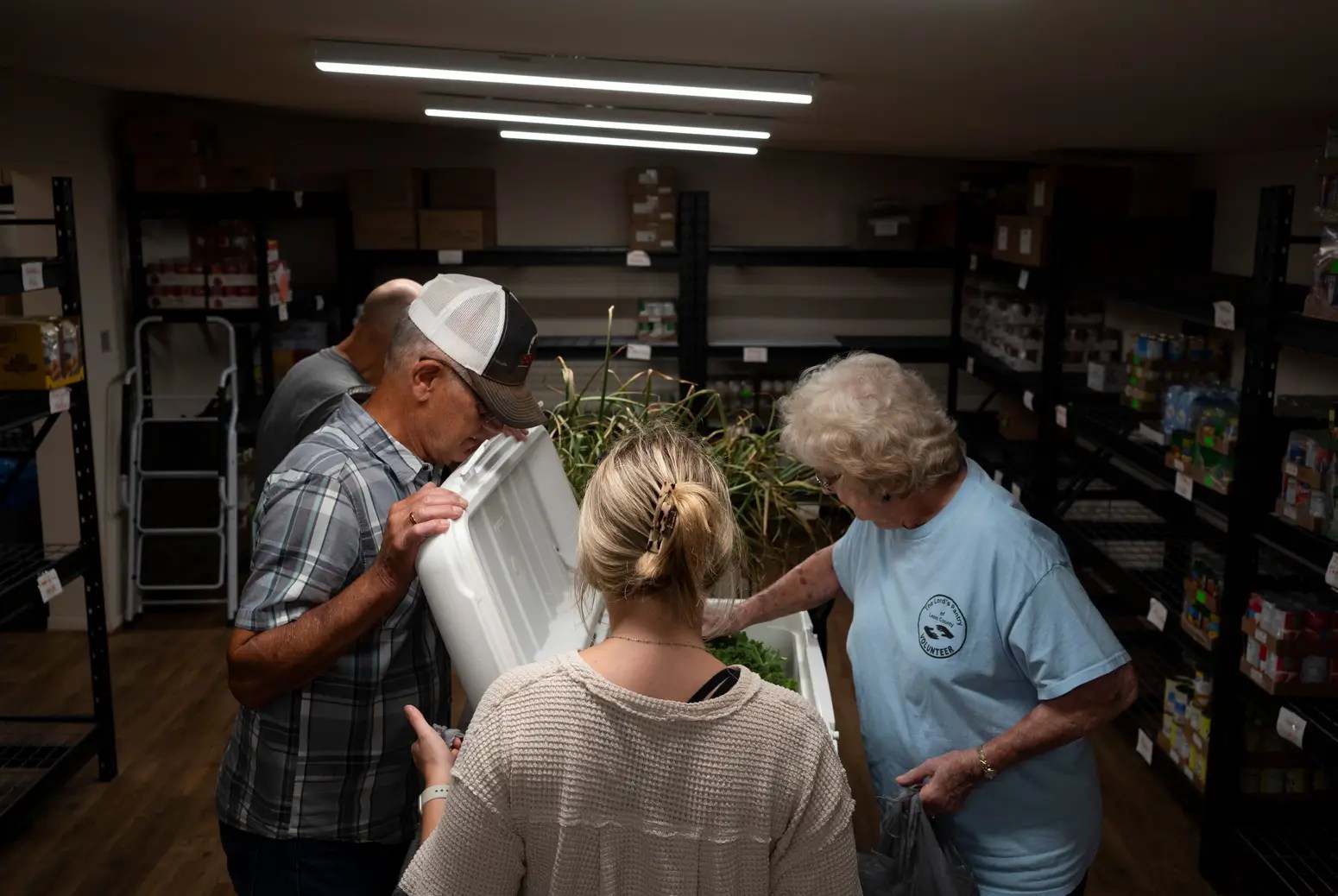
This story was first published by The Texas Tribune, a nonprofit, nonpartisan media organization that informs Texans — and engages with them — about public policy, politics, government and statewide issues.
Five homeschoolers pick fist-size garlic cloves, green jalapeños, strawberries, squash and kale on a breezy Thursday morning in late June. They’re volunteering at a local food garden where bright orange marigolds attract bees from a local keeper’s hive.
The 1-acre garden has yielded about 10,000 pounds of produce for six food pantries since it began harvesting in April 2022. Texan by Nature, which manages the garden and was founded by former First Lady Laura Bush, estimates it has served approximately 2,000 people per month in Limestone, Freestone and Leon counties.
Located in Freestone County about 60 miles east of Waco, NRG Dewey Prairie Garden is a part of a massive effort to restore a 35,000-acre lignite coal mine, which stretches mainly into the town of Jewett and used to fuel NRG’s Limestone Electric Generating Station, a 1,688-megawatt power plant. An NRG spokesperson said the coal plant began running on cleaner-burning coal from Wyoming in 2016.
That’s when the company halted mining locally after more than three decades.
Debbie Glaze, a lead gardener for Texan by Nature, says it’s hard to imagine the garden was once a coal mine. The company has set aside 9 more acres to expand the garden, which was started as a pilot project.

“You wouldn’t think that this could happen,” Glaze said. “I think it is amazing that the ground is actually growing all these vegetables after all that mine digging.”
The Jewett mine’s manager, Michael Altavilla, said he hopes the garden can show how the industry can work with local communities for everybody’s benefit.
“The mining industry has always been seen like we’re the bad guys, we’re destroying the Earth,” Altavilla said. “We want to take people out and show them this form of reclamation, a second purpose, not only mining the coal for energy, but utilizing the ground afterward.”
Lignite was first mined in Texas during the 1850s and was produced primarily from underground mines, but declined in the early 1950s as the oil and gas industry grew in the state. Around the same time, companies began surface mining — which includes strip mining and open-pit mining — to provide fuel for power plants and the concrete industry.
The new mines harvested lignite coal, a form of soft coal that often lies close to the surface. Lignite mining led to bulldozing forests, burying streams, destroying wildlife habitat and leaving the ground contaminated with arsenic, lead and other toxins considered unsafe for human exposure after the mines closed.
In 1975, the Texas Legislature authorized the Texas Railroad Commission, which oversees Texas’ oil and gas industry, to regulate surface coal mining. In 1977, the federal government created a fund to help pay for cleaning up old mines and required companies to restore the land to its prior condition after closing a mine.
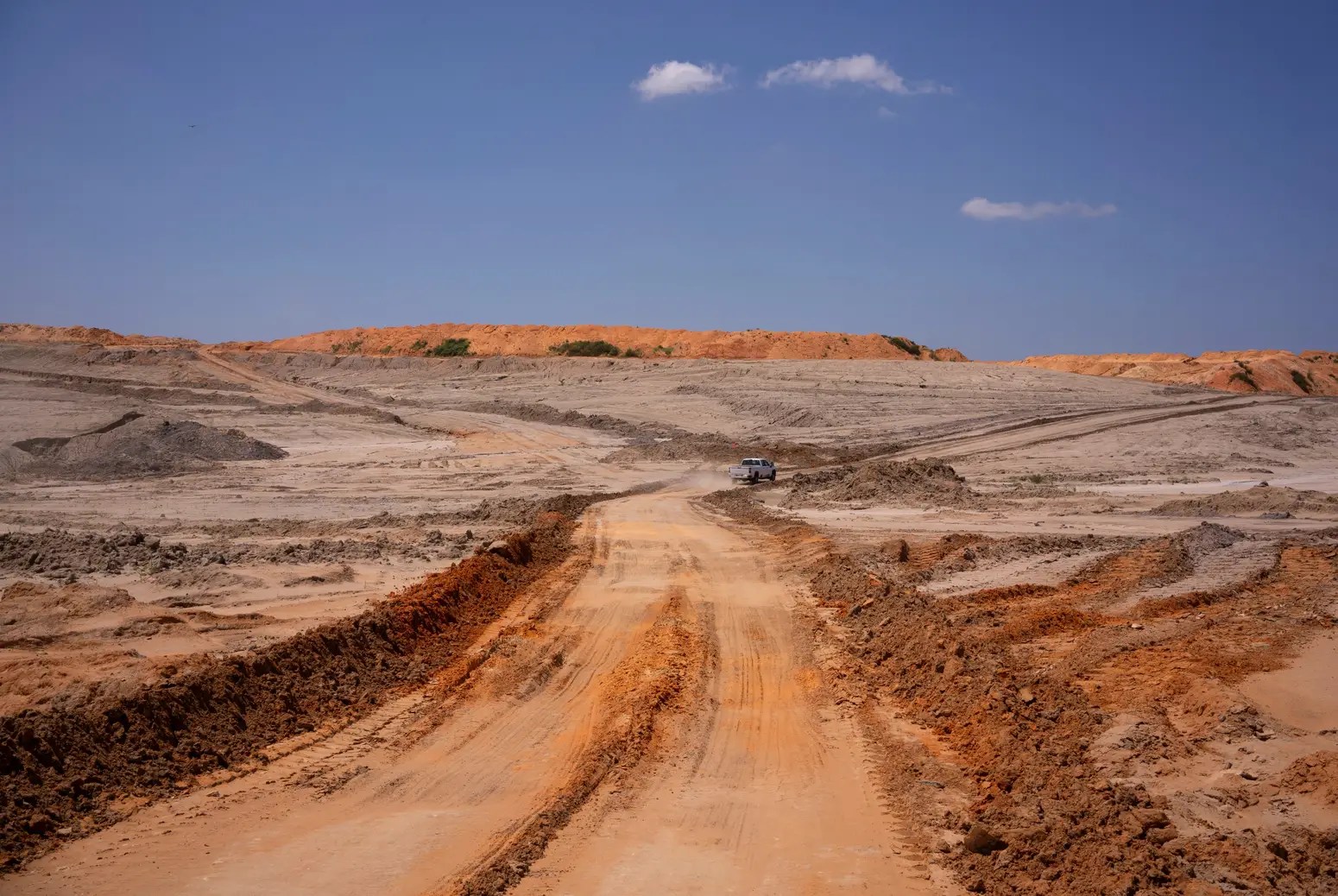
As part of the federal law, a new agency, the Surface Mining and Reclamation Division, was given responsibility to enforce all the new regulations. The Railroad Commission began requiring companies mining coal in Texas to get a state permit and post a bond for each mining site they operate in the state to pay for restoration later.
But the agency has been criticized for allowing companies to do the bare minimum in cleaning up contaminated soil and water at mining sites and failing to enforce the law, according to a 2019 investigation by The Texas Tribune and Grist.
NRG has bonds totaling $112 million to restore the Jewett mine, a process that began in 1986, a year after mining began. Companies commonly do reclamation work even as they’re still mining a site. The reclamation process can take eight to 12 years.
So far, the company says it has replanted 3,500 acres with native grasses, is creating 700 acres of wetlands and has fully reclaimed 5,590 acres at the Jewett mine.
About 8 miles from the garden at another end of the mine site, Joe Harris, a 56-year-old Jewett mine reclamation specialist, wears a reflective vest and a hardhat as he prepares to jump into his pickup truck to snap progress photos of the restoration work.
Harris drives up and down the slopes around mining pits to where the dragline, a massive excavator with a bucket, is working. There’s a clear divide in the ground, from the orange-brown dirt at the surface to the gray deposits down in the pits where coal was extracted. The 300-foot-tall excavator, with a bucket the size of a two-car garage, has the first and most crucial step in returning the land to its original form — refilling those holes.
Mark Payne, who’s been working at the mine for 37 years and operating the dragline for 17 years, wears denim on denim and black sunglasses as he operates the machine from an air-conditioned control room inside the machine’s body. Using levers that look like something from an old arcade game, Payne moves about 150 tons of dirt at a time as country music plays on the radio.

“We’ve been in this part of the mine trying to fill the hole in for almost a year. It takes quite a long while,” Payne said.
Once the pit is filled with soil, the company is required to plant grasses and vegetation similar to what’s growing nearby.
“During the springtime, we plant bermuda grass, in the summer millet and in the fall they plant rye grass,” Harris said.
Once the seeding is done, the company enters a five-year monitoring period during which the soil and water is regularly tested to check for toxic materials.
Inspectors from the Railroad Commission’s Surface Mining and Reclamation Division make monthly visits to mine sites to review test results and check that the company is following reclamation regulations.
The area that includes the garden was monitored for years, and the bond money was released back to the company in 2013, close to 10 years before the garden began harvesting produce. Recent soil reports submitted to the state show the soil is fertile with no toxic-forming materials present.

At another portion of the mine where seeding has already happened, enormous stretches of grasslands are marked by white PVC pipes that have defining stripes: A green stripe means it is under evaluation, while red stripes mean the site has been fully reclaimed.
Harris said the best part of working at the Jewett mine for the past three decades is seeing the land being restored after being here when it was initially scraped to harvest the coal.
“I’ve seen the mining, the clearing, to everything,” Harris said. “I take a lot of pride in this. We want it to look like it was never mined before so when I bring my grandchildren and great-grandchildren, I can say, ‘Look, there was once a mine here.’”
About 16 miles from the mine, garden volunteers deliver zucchini, kale and other produce to a food pantry in Buffalo, a town of about 1,700 where residents have few grocery store options.
Amy Windham, a 37-year-old pantry client and single mother of three, says she always tries to be the first one here because she wants first dibs on the fresh-picked produce.

“Moving up here from Houston, it was such a culture shock because down [in Houston] there is a grocery store on every corner and here it’s only Brookshire [Brothers],” she said. “So that’s the one thing I appreciate about this pantry. The produce is better, you can tell.”
She grabs a cart, and Richard Dahlgrem, 80, a pantry volunteer, helps her pick out groceries. There’s a limit on how much each customer can take depending on the size of their household, but everything is free.
Dahlgrem said it’s nice to see resources from the old mine being poured back to help the community, especially those who are struggling to feed their families.
“What was brought in today is a good indication of what can come from people purposely doing something to help somebody,” he said.
Disclosure: NRG has been a financial supporter of The Texas Tribune, a nonprofit, nonpartisan news organization that is funded in part by donations from members, foundations and corporate sponsors. Financial supporters play no role in the Tribune’s journalism. Find a complete list of them here.
This story was originally published by Grist with the headline At a shuttered Texas coal mine, a 1-acre garden is helping feed 2,000 people per month on Jul 29, 2023.
The National Highway Traffic Safety Administration, or NHTSA, proposed updated fuel economy standards for passenger cars and light duty trucks on Friday that it said could prevent 885 million tons of CO2 emissions by 2050.
The rules would require that automakers improve fuel efficiency by 2 percent per year for passenger cars and 4 percent per year for light trucks, beginning in model year 2027 and continuing through model year 2032.
The agency, which is a division of the Department of Transportation, said the requirements could achieve an average fleet fuel economy of 58 miles per gallon by 2032, saving 88 billion gallons of gasoline by 2050. That, in turn, could save drivers $50 billion over the lifetime of the vehicles. Current federal standards require automakers to achieve an average fleet efficiency of 49 mpg by 2026.
The announcement follows an April proposal by the Environmental Protection Agency, or EPA, to set much stricter emissions limits for passenger vehicles and light-duty trucks, essentially cutting in half the amount of CO2 and other pollutants manufacturers are allowed to produce.
Combined, the rules could contribute to a dramatic transformation of the automobile industry and its environmental impact. Transportation accounts for 28 percent of the nation’s greenhouse gas emissions, the most of any sector. “The reality is that the biggest single step America can take to control global warming pollution is to reduce the emissions coming out of tailpipes,” Dan Becker, director of the Center for Biological Diversity’s Safe Climate Transport Campaign, told Grist.
While neither rule dictates what types of cars automakers produce, they set overall fleet targets that are challenging to achieve without incorporating a lot more zero-emission vehicles like battery-electric cars and trucks. The EPA predicted that its standards, if finalized, would result in EVs making up as much as 67% of new car sales by 2031. If manufacturers were to fall short of these projections, the DOT standards would at least ensure that they make improvements in the fuel consumption of internal combustion vehicles.
The more aggressive efficiency improvements for light-duty trucks will help tackle what Becker called the “truckification” of the nation’s vehicles, but he said the proposed rules should be even stronger, given the NHTSA’s mandate to set the strictest standards possible. Concerned over the threat of supply disruptions after the Middle East oil embargo of the mid-1970s, Congress authorized NHTSA to set mandatory fuel economy standards, called Corporate Average Fuel Economy, or CAFE, for vehicle manufacturers at the “maximum feasible” amount.
In a statement, the Alliance for Automotive Innovation, an industry trade group, did not comment on the specific efficiency targets, but called for a more streamlined regulatory process, rather than having multiple agencies set rules. “Conflicting and overlapping rules are complex and expensive,” said John Bozzella, group president. “The best policy would be a return to a single national standard to reduce carbon in transportation.”
The NHTSA standards would also impact heavy-duty pickup trucks and work vans, requiring a 10 percent improvement per year for many vehicles beginning in model year 2030 and continuing through 2035. Those efficiency gains would save an additional 22 million tons of CO2 by 2050, according to the agency.
Beyond emissions savings, the NHTSA said the new rules would save consumers money at the gas pump and reduce reliance on foreign governments. “Better vehicle fuel efficiency means more money in Americans’ pockets and stronger energy security for the entire nation,” U.S. Transportation Secretary Pete Buttigieg said in a statement.
There will be a 60-day public comment period, during which NHTSA said it would engage with “consumers, unions, automakers, states, environmental groups and others.” The standards are expected to be finalized by the end of this year or the beginning of 2024.
This story was originally published by Grist with the headline Feds’ latest fuel efficiency standards would cut 900M tons of CO2 on Jul 28, 2023.
As heat waves and wildfires cause chaos in North Africa, Europe and North America, climate scientists from the United Nations (UN) have announced that it is almost certain this July will be the warmest month ever recorded.
At a press conference on climate Thursday, UN Secretary-General António Guterres warned, “The era of global warming has ended; the era of global boiling has arrived,” a UN press release said.
“Today, the World Meteorological Organization and the European Commission’s Copernicus Climate Change Service are releasing official data that confirms that July 2023 is set to be the hottest month ever recorded in human history,” Guterres said. “The consequences are clear and they are tragic: children swept away by monsoon rains; families running from the flames; workers collapsing in scorching heat.”
Chris Hewitt, the World Meteorological Organization’s director of climate services, said that, based on 173 years of data, the eight warmest years on record occurred from 2015 to 2022, and that substantial warming had been happening since the 1970s, UN News reported.
“Climate change is here… And it is just the beginning,” Guterres said, as reported by UN News.
Hewitt made the point that the El Niño weather pattern replacing the cooling La Niña would mean the “almost certain likelihood that one of the next five years will be the warmest on record,” and that “more likely than not” average temperatures worldwide would temporarily go above the 1.5 degrees Celsius mark above pre-industrial levels for a minimum of one of those years.
Guterres emphasized that global action was needed now on the emissions and climate adaptation and finance fronts.
“No more hesitancy. No more excuses. No more waiting for others to move first,” Guterres said in the press release. “It is still possible to limit global temperature rise to 1.5 degrees Celsius and avoid the very worst of climate change. But only with dramatic, immediate climate action. We have seen some progress. A robust rollout of renewables. Some positive steps from sectors such as shipping. But none of this is going far enough or fast enough. Accelerating temperatures demand accelerated action.”
Guterres said world leaders need to take steps immediately, especially those from the Group of 20 richest industrial nations, which emit 80 percent of greenhouse gas emissions worldwide, UN News reported.
“We have several critical opportunities ahead. The Africa Climate Summit. The G20 Summit. The UN Climate Ambition Summit. COP28,” Guterres said in the press release. “We need ambitious new national emissions reduction targets from G20 members… And all actors must come together to accelerate a just and equitable transition from fossil fuels to renewables – as we stop oil and gas expansion, and funding and licensing for new coal, oil and gas… And we must reach net zero electricity by 2035 in developed countries and 2040 elsewhere, as we work to bring affordable electricity to everyone on earth.”
Guterres also called for an end to corporations and financial institutions hiding from their culpability and responsibilities.
“Financial institutions must end their fossil fuel lending, underwriting and investments and shift to renewables instead. And fossil fuel companies must chart their move towards clean energy, with detailed transition plans across the entire value chain: No more greenwashing. No more deception. And no more abusive distortion of anti-trust laws to sabotage net zero alliances,” Guterres said in the press release.
Guterres went on to say that extreme weather was “becoming the new normal,” and that wealthy nations needed to support countries “on the frontlines – who have done the least to cause the crisis and have the least resources to deal with it” from the resulting flooding, droughts, heat and fires.
The UN Secretary-General added that developed countries needed to provide $100 billion each year for climate support in developing countries, make sure the Green Climate Fund is replenished and make the loss and damage fund operational at COP28.
Guterres went on to say that a price needed to be put on carbon and that development banks need to make more private finance available at a reasonable cost for developing countries, as well as augment their funding for adaptation, loss and damage and renewables.
“The evidence is everywhere: humanity has unleashed destruction. This must not inspire despair, but action. We can still stop the worst. But to do so we must turn a year of burning heat into a year of burning ambition. And accelerate climate action – now,” Guterres said.
The post ‘Era of Global Boiling’ Has Arrived, UN Chief Says appeared first on EcoWatch.
A challenge to London’s Ultra Low Emission Zone (ULEZ), which covers almost all of Greater London, by five local authorities has been dismissed by the city’s high court.
London Mayor Sadiq Khan extended the zone intended to reduce pollution in the city of around nine million people to encompass an additional five million in some of the outer boroughs. The extension is to begin August 29.
“This landmark decision is good news as it means we can proceed with cleaning up the air in outer London,” Khan said in a statement, as Reuters reported.
Those who drive vehicles that are non-compliant with ULEZ standards — usually gas-powered cars made before 2006 and diesel vehicles registered before 2015 — are required to pay a fee of £12.50 ($16.07) per day for driving in the zone.
“The decision to expand the Ulez was very difficult and not something I took lightly, and I continue to do everything possible to address any concerns Londoners may have,” Khan said, as reported by The Guardian. “The coming expansion will see 5 million more Londoners being able to breathe cleaner air.”
Former Mayor Boris Johnson originally instigated the ULEZ.
Khan said the ULEZ was needed to tackle the pollution that is causing an array of health issues for Londoners.
“Nine out of 10 cars seen driving in outer London on an average day are already compliant, so won’t pay a penny – yet will still see the benefits of cleaner air. Air pollution is an urgent public health crisis – our children are growing up with stunted lungs, and it is linked to a host of serious conditions, from heart disease to cancer and dementia,” Khan said, according to The Guardian.
Legal action against the ULEZ was brought in February by the city’s outer boroughs of Bromley, Bexley, Hillingdon and Harrow, as well as the Surrey County Council. Their lawyers said that Khan had overstepped his powers and provided a defective government incentive scrappage program for trading in older polluting vehicles for more environmentally friendly ones.
The local authorities expressed great disappointment with the decision, Reuters reported.
Justice Swift said he was “satisfied” that Khan’s decision “was within his powers,” and the vehicle scrappage program was lawful, though “not in depth,” reported The Guardian.
Khan promised to expand the current vehicle scrappage program to “nearly a million families who receive child benefit and all small businesses with up to 50 employees,” as Business Green reported.
Khan said the current ULEZ had reduced nitrogen dioxide pollution in central London by nearly 50 percent.
Currently, only approximately six percent of vehicles entering the ULEZ pay a fee, according to Transport for London, reported The Guardian.
“Everyone involved in the case said they wanted clean air, and now that the ULEZ has been confirmed as legal it is time for everyone to focus on how we support a successful implementation,” said Green Party London Assembly member Sian Berry, as Business Green reported.
The post In ‘Landmark’ Decision, Court Approves London Ultra Low Emissions Expansion That Could Bring Cleaner Air to 5 Million People appeared first on EcoWatch.
Offshore wind energy is getting a major boost in Maine, which has just approved adding 3,000 megawatts of energy provided by offshore wind turbines by 2040. The 3,000 megawatts would be enough to meet about half of Maine’s electricity demand.
Maine Governor Janet Mills signed the law, LD 1895, on Thursday, noting the legislation would contribute to port development with inclusions to still protect lobster fishing areas.
“Offshore wind, done responsibly, offers Maine the opportunity to secure abundant clean energy, stable energy prices, good-paying jobs, and a healthier environment for future generations,” Mills said in a statement.
In previous discussions to expand offshore wind in the state, the lobster industry raised concerns and protested offshore wind development.
“We don’t know how much the electromagnetic field around the cables going to shore is going to affect things on bottom,” lobster fisher Clayton Philbrook told WABI5, a local news station based in Bangor. “Will lobsters go near it? Will they crawl over them? Will it repel them? All of this is information that, as far as I know, there’s been no research done on it.”
In response, the bill notes protections for Lobster Management Area 1, and the law gives preference to offshore wind energy projects designed for areas outside of these lobstering grounds.
The new legislation allows the Governor’s Energy Office to add up to 3,000 megawatts of electricity from offshore wind turbines by 2040 in order to help the state meet its goal of 100% clean energy by 2050. As of 2021, Maine ranks fifth in the U.S. for the portion of wind-powered electricity generation (23%) compared to total electricity generation, according to the U.S. Energy Information Administration.
The wind turbines for the Gulf of Maine will need to utilize floating platforms, rather than anchoring the turbines to the ocean floor, as The Associated Press reported, because the waters are too deep.
The Maine Department of Transportation will likely choose its preferred location for an offshore wind energy port by 2024, according to the statement on the governor’s office website.
“To combat climate change and invest in Maine’s energy independence, our state has set ambitious goals for renewable energy. It’s clear that this effort will involve offshore wind energy projects,” said Senator Mark Lawrence, who sponsored the amended bill. “We need to have guardrails in place to make sure this is done right and truly benefits Mainers. This bill will mean jobs, lower and more stable energy prices while combating climate change at the same time.”
The post Maine’s Offshore Wind Boost Could Meet Half Its Energy Needs by 2040 appeared first on EcoWatch.

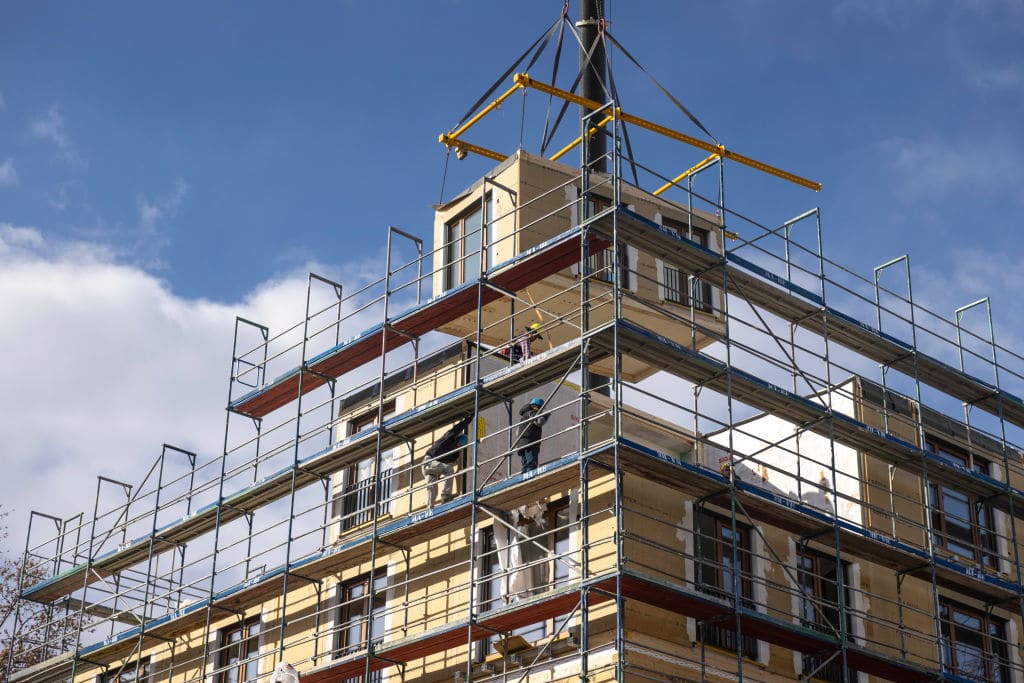
Green construction involves building structures efficiently and sustainably. This can be done in a number of ways, from using more sustainable building materials or making use of recycled materials, to crafting buildings that minimize energy and water consumption. The idea is to focus on sustainability and eco-friendliness of the building throughout its lifecycle, from the first design and planning stages throughout the construction process and as the building is used, and finally to when the building is eventually demolished.
In addition to protecting the environment, green construction practices should emphasize health and wellness for those who will occupy the building for years to come, whether it’s a small residential space or a large commercial building.
Construction projects and the built environment as a whole are major contributors to greenhouse gas emissions. According to Architecture 2030, ongoing construction contributes about 13% of total annual carbon dioxide emissions, while operations of existing buildings make up 27% of annual carbon emissions globally. While emissions dropped during the lockdowns of the COVID-19 pandemic, emissions quickly rebounded to reach record highs.
Buildings require a lot of energy to build and operate. A 2022 report from the United Nations Environment Programme found that the buildings and construction sector make up 34% of total energy demand. Even though investments in boosting energy efficiency in buildings increased by 16% in 2021, any benefits were counteracted by an increase in the size of buildings.
Further, buildings draw a huge number of resources like raw materials and water. Materials for construction, like steel and concrete, make up about 9% of overall energy-related emissions, and raw resource consumption for construction is expected to double by 2060. Just one square meter of wall can require an average of 350 liters of water to construct.
About two-thirds of all buildings standing today will still exist in 2040, and without retrofitting or renovations to make them more sustainable, they will continue to contribute large amounts of emissions and could even prevent humanity from limiting warming to 1.5°C and the accompanying worst impacts of climate change. According to Statista, the average global annual investment in energy-efficient buildings will need to reach over $536 trillion from 2026 to 2030 in order to reach net-zero emissions by 2050. As of 2022, these investments were around $215 trillion.
While focusing on green construction practices and a more sustainable built environment is critical to meet Paris Agreement goals and curb the worst effects of climate change, there are many benefits of these practices. But transitioning to new policies and procedures can also come with challenges for building occupants, property owners and builders.
Creating a more sustainable built environment isn’t just a perk; it’s a necessity. We’ll need to see sharp increases in green construction investments moving forward in order to reduce emissions and resource consumption and ultimately meet the goals set by the Paris Agreement. Aside from being better for the Earth, though, green construction also offers project stakeholders some financial perks.
Green buildings are designed to reduce emissions at every stage of a structure’s lifecycle. In fact, the average green building reduces its carbon emissions by about 34% compared to traditional buildings.
By using less resources, LEED-certified buildings reduce emissions, even outside of minimizing one of the biggest source of building emissions, energy consumption. One study by The Center for the Built Environment at University of California, Berkeley found that buildings certified as LEED for Operations and Maintenance had 50% less emissions from water consumption and 48% less emissions from solid waste compared to conventional buildings.
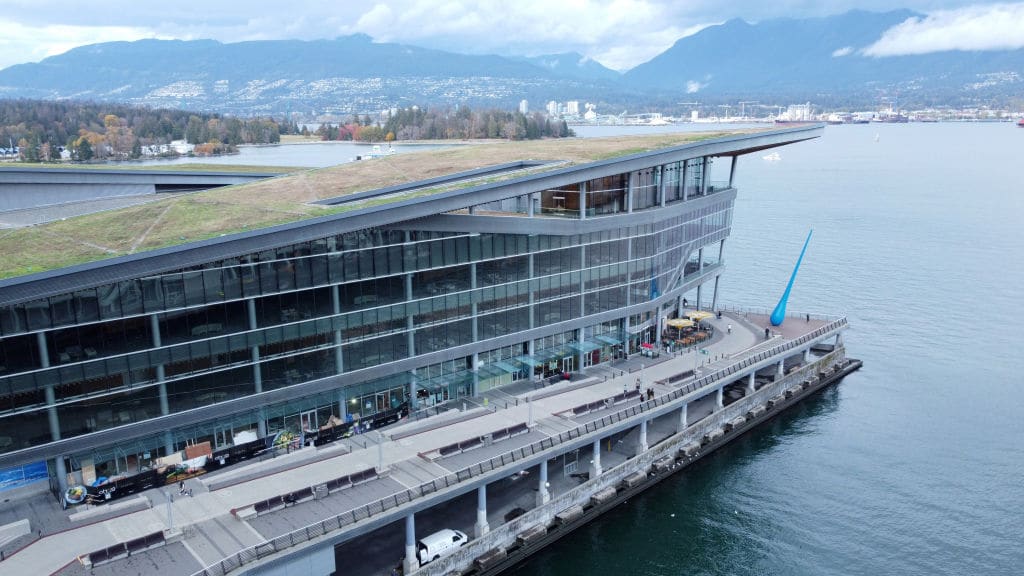
Because green construction incorporates ways to minimize resource demand, these practices can improve building efficiency. Buildings that are Energy Star-certified, for instance, save about 35% energy compared to conventional buildings because they are designed for lower energy consumption.
Green construction can also lead to more efficient water allocation, and sustainable buildings reduce water consumption by about 15% simply by incorporating elements like low-flow faucets or water-saving toilets. Water usage can also be minimized throughout the construction process.
Whether building new structures or retrofitting older ones, green construction practices provide opportunities to incorporate renewable energy. Renewable energy sources can greatly reduce emissions for buildings. According to International Renewable Energy Agency (IRENA), renewables, energy-efficient design, and electrification combined can reduce energy-related carbon emissions by about 90%.
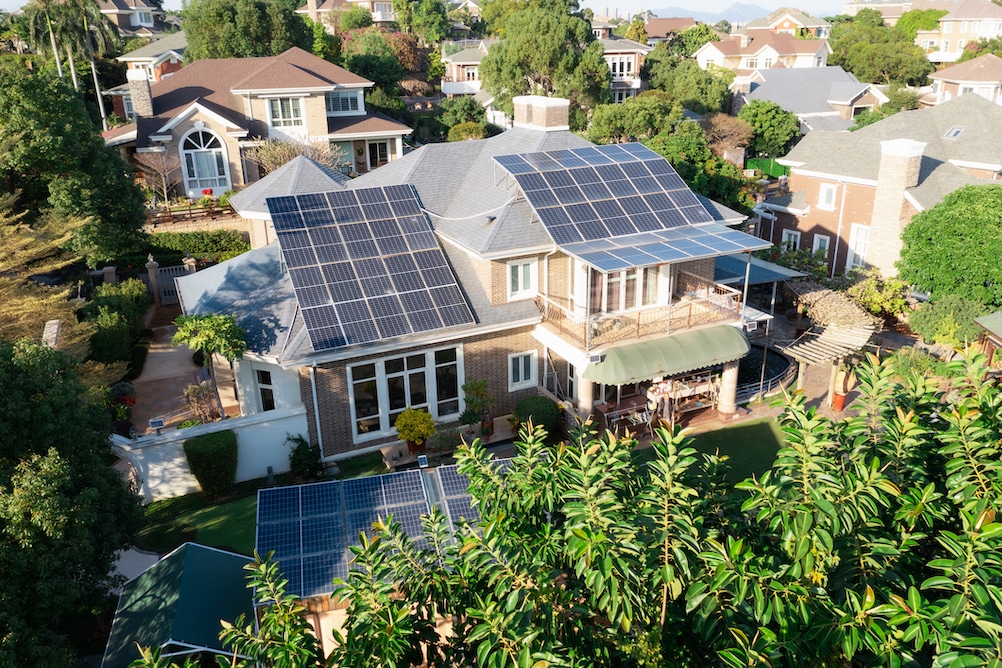
From making use of recycled or reclaimed building materials to designing structures that use less energy and water, green construction and sustainable buildings can minimize upfront and ongoing resource costs. According to the U.S. Green Building Council, sustainable buildings with LEED accreditation have about 20% lower ongoing maintenance costs compared to conventional commercial buildings. Not only that, but these LEED-certified buildings can save $1.2 billion in energy costs and $149.5 million in water costs.
There are a few roadblocks when it comes to constructing or renovating buildings to be more sustainable. But when you compare the challenges to the economic and environmental benefits, the advantages often outweigh the concerns and make green building the best option for our future.
One big challenge to green construction is the real and perceived upfront costs. Property owners and builders may believe prices for sustainable materials and technologies will cost more to install and implement than conventional products. That may be true, but it isn’t always. Even using reclaimed or recycled materials can lower costs, but project stakeholders will also need to weigh long-term cost savings as well as financial incentives like grants or tax credits for eco-friendly projects.
One thing for project stakeholders to keep in mind with green construction is that finding experts, materials and technology that meet sustainability targets can be more difficult than simply sourcing conventional products. Fortunately, this is quickly becoming less and less of a challenge as green building products and those trained in green construction and design are becoming more available and accessible.
Just because something is labeled “green” doesn’t always mean it is sustainable. Projects can be described as green construction or buildings may be labeled as green or sustainable, but their improvements could be minimal. Maybe a building is made with “natural materials” including wood linked to deforestation of important wildlife habitats or flooring is made from reclaimed materials but is treated with harsh chemical sealants.
So how are builders reducing the carbon footprint of new structures? Turning to more sustainable materials is key, considering just three materials — concrete, steel and aluminum — contribute around 23% of all emissions, according to Architecture 2030.
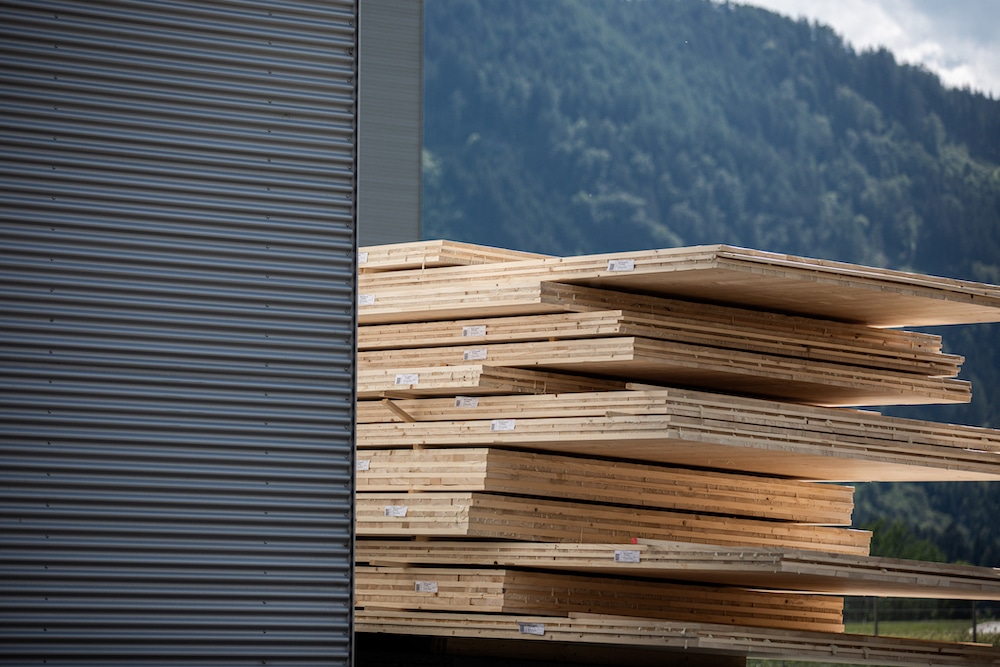
Cross-laminated timber, or CLT, is a strong yet lightweight material made from layered, structural grade wood that is arranged in crossing layers and glued together. It requires less energy to manufacture than concrete or steel and offers some carbon sequestering potential.
Hempcrete is a long-lasting, fire-, pest- and mold-resistant material made from the inner core of hemp mixed with water and aggregate. In addition to making use of agricultural byproduct of hemp plants, hempcrete is considered non-toxic and a carbon-sequestering material. It is popular for wall or roof insulation.
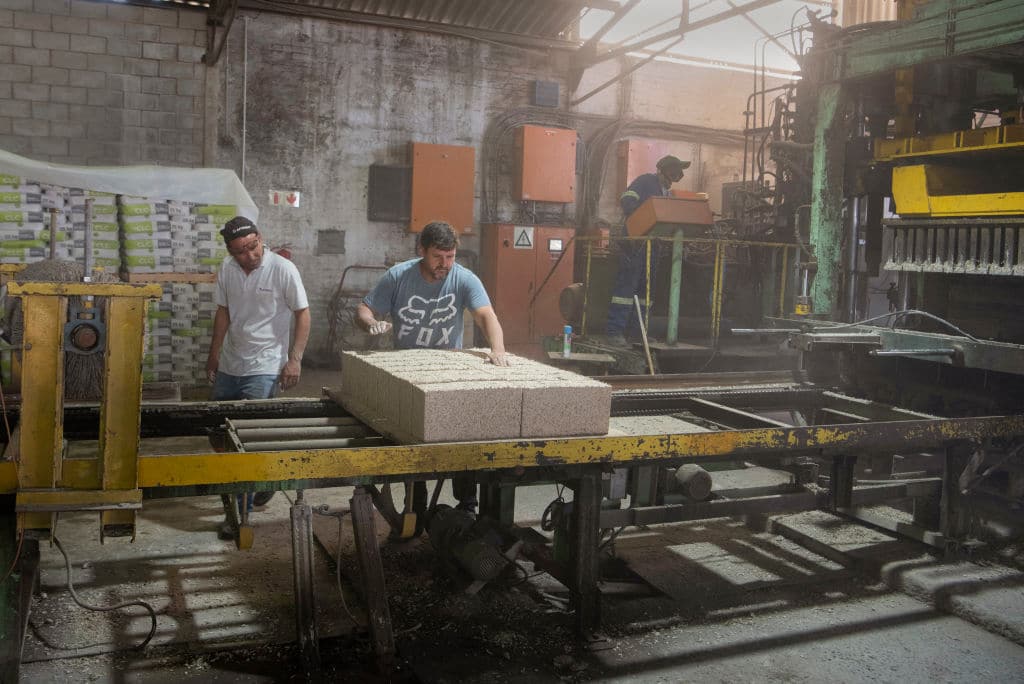
From interior cork flooring to exterior home cladding, cork is a sustainable building material sought after for its insulating and soundproofing properties. Cork is also reusable, natural and biodegradable. Cork oak is the only tree that can regenerate its bark after the material has been harvested.
Like cork, bamboo regenerates quickly after harvest, with some species growing as much as 35 inches in a day. According to Project Drawdown, living biomass and long-lived bamboo products could total up to 19.60 gigatons of sequestered carbon by 2050. It is ranked as a harder material than some woods, like oak or ash, yet lightweight, making it useful in many construction applications.

Rammed earth makes use of local materials and minimizes waste. It typically involves compressing damp earth into frameworks to form walls. This material is strong and durable. While rammed earth has typically been considered best in areas with moderate temperatures and minimal rainfall, one study found that rammed earth walls saw only slight erosion, 2 millimeters, when exposed to the elements for 20 years in a wet continental climate.
One significant way to reduce the embodied carbon of a building or retrofit is to use salvaged or recycled materials. In a concept paper, All for Reuse explained that using reclaimed materials could reduce embodied carbon emissions by over 90%. Reusing materials reduces the resources and energy needed to manufacture virgin materials and can even reduce the project cost.
Building… with mushrooms? That’s right. Mycelium is the root-like structures of fungus, including mushrooms. When harvested and dried, mycelium can be made into an incredibly strong material that is waterproof and resistant to fire and mold. As a natural material, mycelium is naturally biodegradable and has potential to work in a variety of different ways for construction. It requires more study and development, but offers a promising future for green construction.
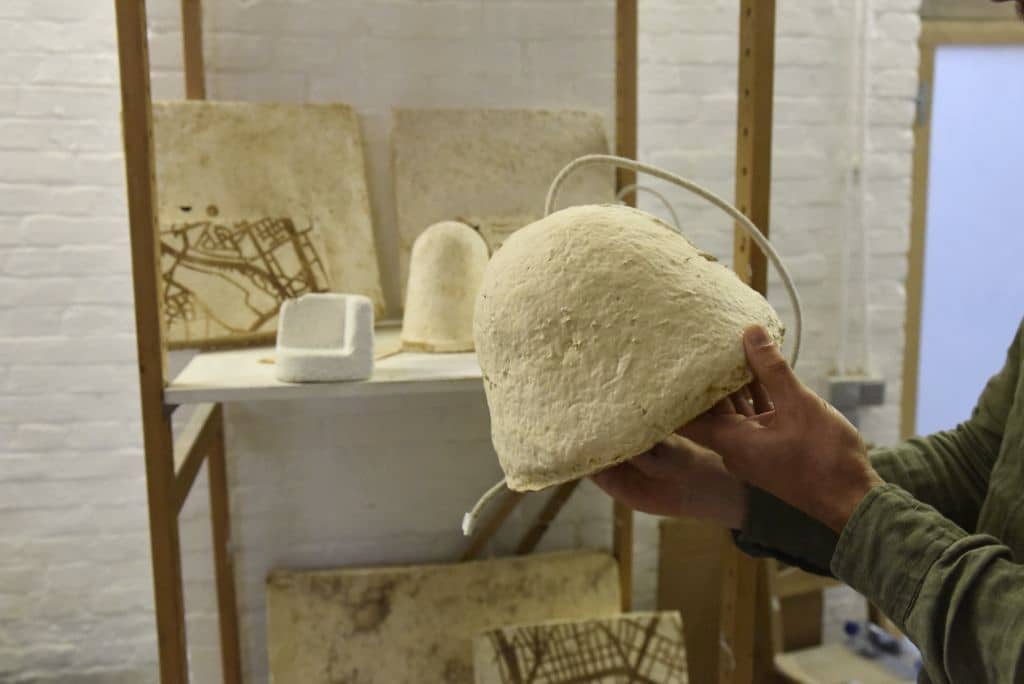
There are many third-party certifications around the world that can determine whether a building has met specific sustainability- and wellness-focused criteria in order to earn that certification. Typically, designers will need to choose a certificate that they’d like the building to earn, apply, then begin designing to meet the requirements and ultimately earn the certification. From LEED to Passivhaus, here are some popular green building certifications around the world.
Leadership in Energy and Environmental Design (LEED), established by the U.S. Green Building Council, has a rating system with four major categories: certified, silver, gold, or platinum, with platinum being the highest certification possible for earning the most points toward sustainable design. Projects should reduce emissions, conserve water, enhance human health, protect and boost biodiversity, promote sustainable materials, and improve local quality of life. LEED offers certifications for various types of projects, from residential to building design to building operations to entire cities.
Passive House, or Passivhaus, is an internationally recognized concept as well as a certification for buildings designed to minimize energy use. Developed by Passive House Institute, Passive House buildings may use up to 90% less energy than conventional buildings. In addition to reducing energy demand, Passive House principles are focused on improving the health and well-being of building occupants, through elements like improved ventilation and reduced noise pollution.
The WELL Building Standard, created by the International WELL Building Institute, includes 10 major concepts for its certification: Air, Water, Nourishment, Light, Movement, Thermal Comfort, Sound, Materials, Mind and Community. Projects earn points toward these concepts, and those points add up to bronze, silver, gold or platinum certification. While WELL is focused more on human health of occupants over environmental benefits, it does incorporate sustainable design elements, like integrating more green spaces, reducing air pollution and utilizing non-toxic materials.
Many people are familiar with EnergyStar when it comes to home appliances, but this label, administered by the U.S. Environmental Protection Agency (EPA), can also apply to buildings. EnergyStar commercial buildings can boost energy savings by up to 30% through improvements like installing efficient lighting or using Energy Star-certified products. Commercial buildings can earn a 1 to 100 rating for Energy Star performance, with 1 being the lowest, 50 being average and 100 being a top-performing building.
The International Living Future Institute’s Living Building Challenge is focused on regenerative design and focuses on seven key areas: Place, Water, Energy, Health and Happiness, Materials, Equity, and Beauty. It is one of the most rigorous green building concepts in the world. These projects are designed for self-sufficiency and connection between humans, human habitats and nature. Projects incorporate features like closed-loop water systems, renewables to reach net-positive carbon each year, regular indoor air quality tests and more.
Building Research Establishment Environmental Assessment Method (BREEAM) ranks buildings from pass, good, very good, excellent to outstanding. The method is focused on water, management, energy, transport, health and wellbeing, resources, resilience, land use, materials, waste, and innovation. Achieving this certification can result in many benefits, including reduced energy use, improved cost savings and increased occupants’ satisfaction.
There’s no shortage of examples of sustainable buildings. You may have incorporated green building practices within your own home, perhaps by installing solar panels on the roof or bamboo flooring in your office.
Some projects go above and beyond, earning multiple certifications and even achieving net-zero emissions. Here are just a few top examples of sustainability in the built environment:

The Shanghai Tower, opened in 2015 and designed by Gensler, is the second-tallest building in the world and one of the most sustainable. This skyscraper was made with recycled materials and has a design to capture and reuse rainwater and capture wind for natural ventilation. Over 270 wind turbines produce over 150,000 kWh each year. It has earned LEED Platinum certification.
From a green roof and a facade made of solar panels to the rainwater harvesting system and smart shades that can be controlled by an app, The Edge, designed by PLP Architects, is an impressively sustainable building. In fact, The Edge has earned a 98.3% BREEAM Outstanding ranking.

The residential Bosco Verticale (Vertical Forest) by Boeri Studio is covered in green, encompassing 800 trees, 15,000 perennials and ground-covering plants and 5,000 shrubs. All this plant life has become habitat for birds, butterflies and other wildlife while absorbing carbon, improving shading and insulation and reducing energy costs.
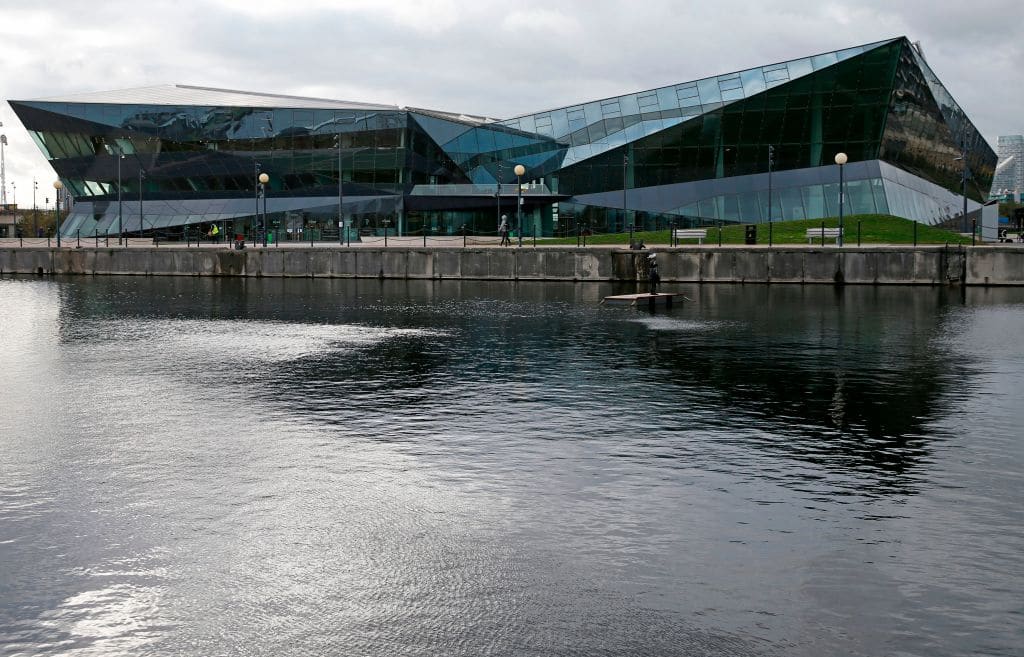
Designed by WilkinsonEyre, The Crystal is now home to London’s City Hall and is the winner of many sustainable design awards. It features multiple renewable technologies, from solar and wind power to EV charging stations and geothermal energy; excess energy is sent back to the grid. It has achieved both LEED Platinum and BREEAM Outstanding.
A sustainable built environment is the future. Whether through designing and building new, energy-efficient projects or retrofitting older buildings to be more airtight or to support renewable energy sources, green construction must amp up for the world to limit warming to 1.5°C, or else suffer from the extreme consequences of unchecked climate change. Even maintaining 2°C warming compared to pre-industrial levels will require building-related emissions to decrease 85%, putting an extreme emphasis and dependence on green construction.
There are many excellent examples of sustainable buildings out there today, and green construction investments are only expected to grow. Focusing on reducing the carbon footprint of the built environment could create value pools worth $800 billion to nearly $2 trillion, and retrofits has the potential to become a $240 billion to $1.1 trillion market by 2036.
While these figures are promising for the future of green construction, the reality is still that this sector needs to ramp up dramatically to decarbonize before the world surpasses the 1.5°C threshold. As one of the biggest contributors to global emissions, the construction industry must put sustainability first moving forward.
The post Green Construction 101: Everything You Need to Know appeared first on EcoWatch.
Welcome to the hottest part of summer, when the heat and smoke season may have…
The post Earth911 Podcast: Consumer Reports’ New Electric Yard Tool Recommendations appeared first on Earth911.
The U.S. Department of Energy (DOE) recently launched the $5.1 million Wind Turbine Materials Recycling Prize….
The post Wind Turbine Recycling Prize Offers $5.1 Million to Entrepreneurs, Promotes Local Solutions appeared first on Earth911.